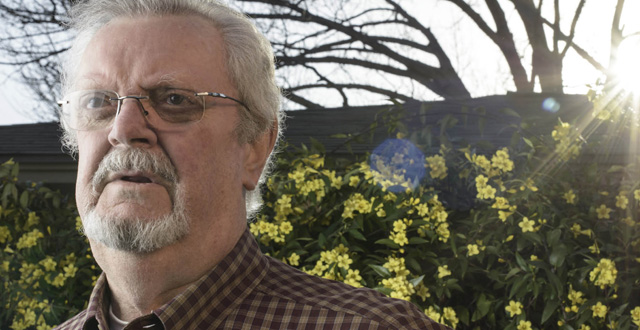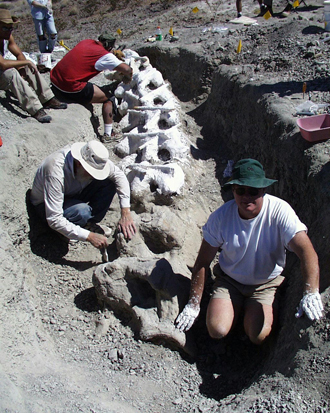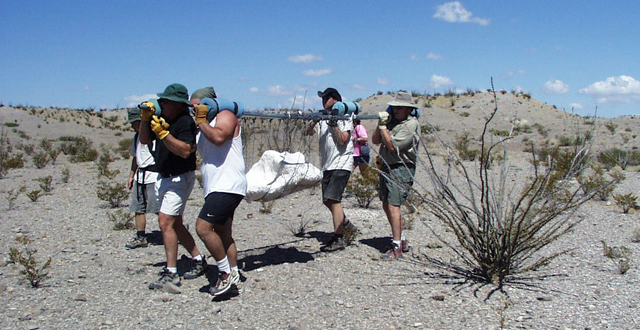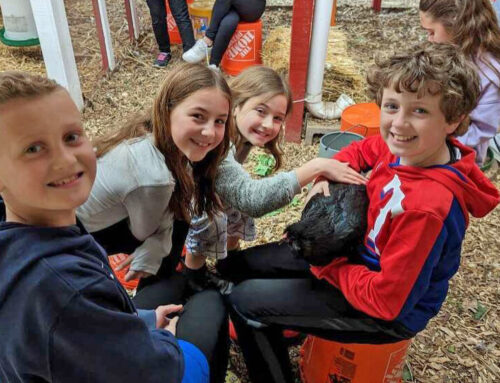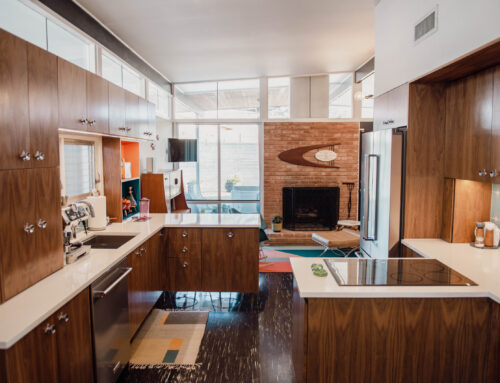Before its winter 2012 opening, the Perot Museum of Nature and Science garnered tremendous buzz for its state-of-the-art design and unique exhibits. Most brag-worthy, perhaps, was the museum’s debut of a full-scale model Alamosaurus, one of the largest dinosaurs ever to roam North America, accompanied by a display comprising several of the dinosaur’s real-life bones. In 1997, a group of science-education students from University of Texas at Dallas discovered the bones — the first-ever from an Alamosaurus cervical vertebrae (neck) — while on a field trip to Big Bend National Park in West Texas. Lake Highlands resident Fred Fifer, who worked as a professor at UTD from the late 1960s until 2001, was part of the crew that made the enormous discovery and undertook the painstaking excavation.
Let’s start with the day you and the students discovered that first Alamosaurus bone. How did it go down?
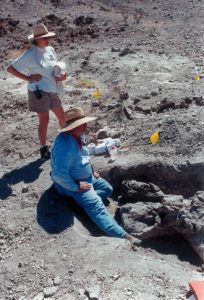 I had been at UTD for 30-plus years. Started when it was a research center, before it was even a university. My job involved starting and running a science education program, for students aiming to become science teachers. So I am not a paleontologist. But in the ’70s I started doing summer science-related field trips for the students — we went to Yellowstone, Hawaii, Cozumel … researching various disciplines. We took one trip across the country to Canada to study energy creation — coal mines, wind energy, that sort of thing. And we made great use of Big Bend National Park. Big Bend is a mecca for dinosaur fossils. On one of these trips, it was one of [UTD geology professor] Dr. Homer Montgomery’s students, Dana Biasatti, who spotted the bone. She has said it was just poking out above the surface.
I had been at UTD for 30-plus years. Started when it was a research center, before it was even a university. My job involved starting and running a science education program, for students aiming to become science teachers. So I am not a paleontologist. But in the ’70s I started doing summer science-related field trips for the students — we went to Yellowstone, Hawaii, Cozumel … researching various disciplines. We took one trip across the country to Canada to study energy creation — coal mines, wind energy, that sort of thing. And we made great use of Big Bend National Park. Big Bend is a mecca for dinosaur fossils. On one of these trips, it was one of [UTD geology professor] Dr. Homer Montgomery’s students, Dana Biasatti, who spotted the bone. She has said it was just poking out above the surface.
How do you know it is a dinosaur bone and not, say, a rock or a petrified stick?
You tap it. When you tap a bone, it makes a different sound then when you tap a rock. Once you know from the sound that it is a bone, you don’t dig with heavy tools — you pull out the paintbrush [to dust away the dirt], and you must work gently to excavate the bones without damaging them.
So then you just got to work delicately digging?
Oh, no! We had to get permission from the federal government to dig in a national park.
And how long did that take?
About a year.
Wow.
 Yes, and then we brought in the slave labor, meaning grad students, to help with the excavation. All told it took four years working summers to get it all. Eventually, the team unearthed bones from both adult and juvenile Alamosauruses … including 10 vertebrae weighing up to 1,000 pounds each. Based on the bones, it’s estimated the adult was 100 feet long and weighed 50 tons. And it was hard work. We would start our days at about 4 a.m. and dig until the afternoon and spend the rest of the day looking for shade. We had to camp about three miles from the site and were not allowed to use vehicles, bikes, or horses or anything that would disturb the land to get there.
Yes, and then we brought in the slave labor, meaning grad students, to help with the excavation. All told it took four years working summers to get it all. Eventually, the team unearthed bones from both adult and juvenile Alamosauruses … including 10 vertebrae weighing up to 1,000 pounds each. Based on the bones, it’s estimated the adult was 100 feet long and weighed 50 tons. And it was hard work. We would start our days at about 4 a.m. and dig until the afternoon and spend the rest of the day looking for shade. We had to camp about three miles from the site and were not allowed to use vehicles, bikes, or horses or anything that would disturb the land to get there.
That would make relocating 1,000-pound dinosaur bones rather difficult, yes?
Yes. First, in order to preserve the bones, you put them in plaster, so we had to haul about 1,500 pounds of plaster mix at a time to the site, and water, and mix it there. The students cut long strips of burlap, which you dip in plaster and wrap around the bone — just like a cast. Throughout the project we had hundreds of people come help. Teachers and students from the local school district and even as far as Dallas and Richardson schools showed up.
In order to remove the vertebrae bones, we made a stretcher of wire and electrical conduit and managed to get two of the small ones out on it. Those each weighed about 300-400 pounds or more.
So how did you get the big ones out?
Dr. Montgomery worked out a deal with Bell Helicopter. The so-called “Dinosaur Airlift” carried the larger bones to our transportation vehicle, which we filled up. One of them didn’t fit on the trailer, so I hauled it back to Dallas in the bed of my pickup. I stopped by Hamilton Park Elementary, where my grandson’s second-grade class got to come out and see the bone. It was all wrapped up, but still, the size was impressive. I think they will remember that.
And you did what with them after that?
Since UTD didn’t have a paleontology department, we turned all the fossils over to the paleontology laboratory at the Dallas Museum of Natural History.
I imagine many a paleontologist’s life’s dream is to uncover something like this, so was there much jealousy about UTD making such a colossal discovery?
Some of the folks from University of Texas Austin were adamant in their disgust (chuckles). UT Dallas has always been the unloved stepchild of the system. But, you know, a number of our UTD graduates have gone on to get doctorates and do important things.
The Alamosaurus exhibit at the Perot Museum is breathtaking. So, thanks for your part in making it happen. Have you seen it?
I have. Now, when I first heard about it, I was told that we were not given credit at all for the discovery, which I was ready to accept, but, in fact, near the display of bones, there is a small information board indicating that the bones were discovered by UT Dallas students in 1997, so that’s OK.
Interview is edited for brevity.

